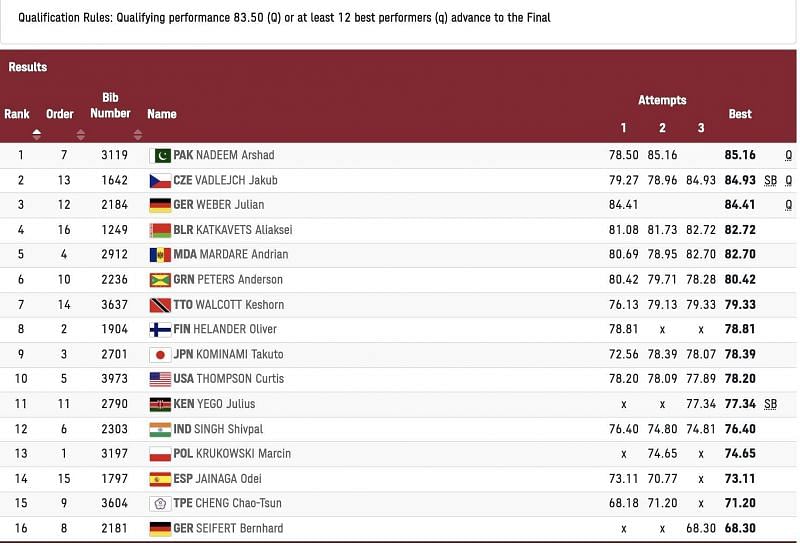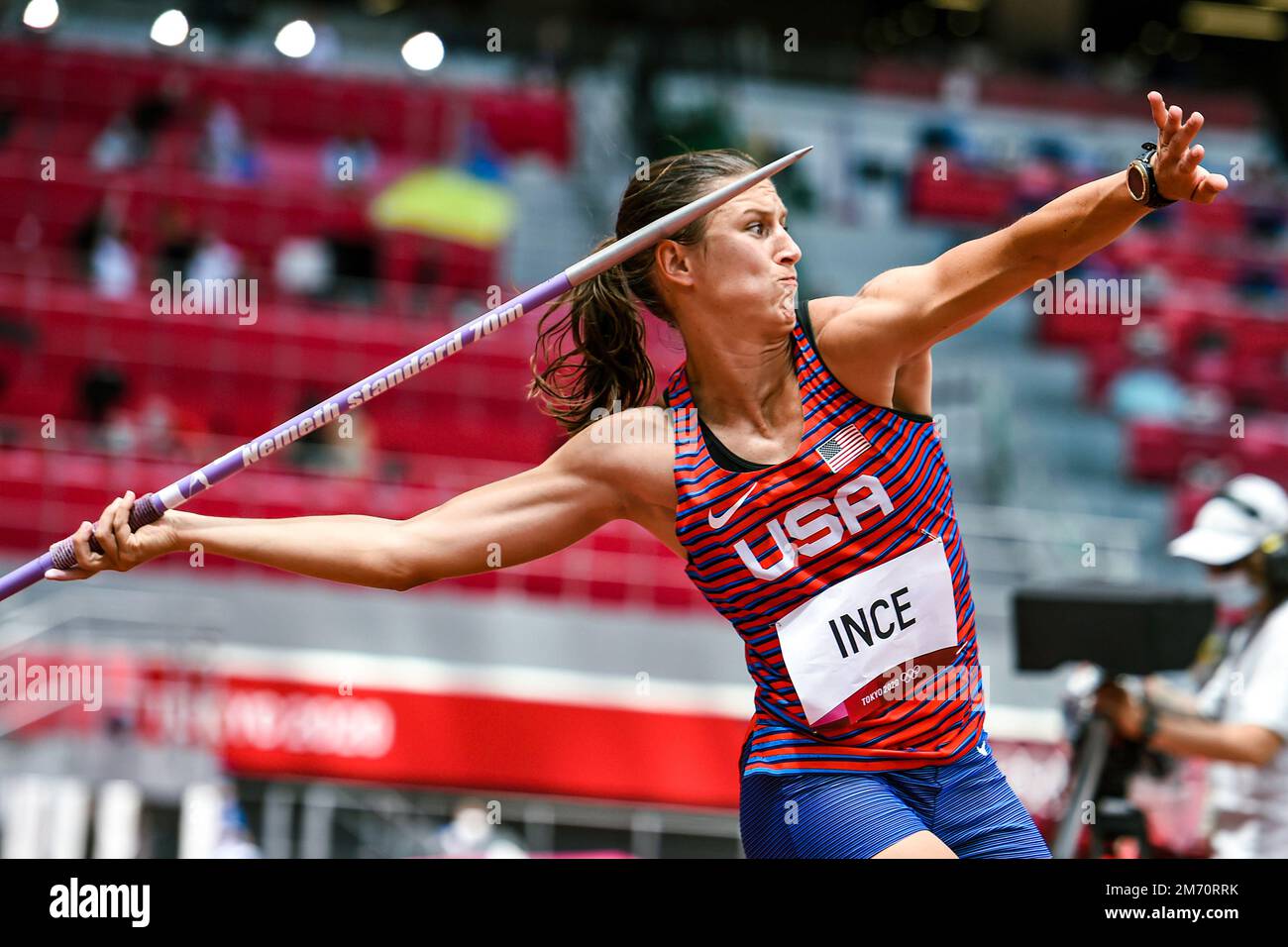Javelin Throw Techniques and Strategies

The javelin throw is a track and field event that requires a combination of strength, speed, and technique. Athletes aim to throw a javelin as far as possible, with the goal of achieving the greatest distance. To achieve this, they employ specific techniques and strategies that maximize their throw.
Grip and Hold
The grip is crucial for controlling the javelin during the throw. Athletes typically hold the javelin with their dominant hand near the center of gravity, with their non-dominant hand supporting the javelin further back. This grip provides a balanced and secure hold, allowing for maximum power and control.
Run-up
The run-up is the approach taken by the athlete before releasing the javelin. The run-up should be smooth and consistent, allowing the athlete to build up speed and momentum. The athlete must maintain balance and control throughout the run-up to ensure a smooth transition into the throwing motion.
Throwing Motion
The throwing motion is the most crucial aspect of the javelin throw. It involves a series of coordinated movements, starting with the backswing and ending with the release. The athlete’s body rotates and extends, transferring energy from the lower body to the upper body and ultimately to the javelin.
Release
The release is the moment the athlete lets go of the javelin. The javelin should be released at a specific angle and with a specific amount of force to maximize distance. The athlete’s arm should be fully extended and the javelin should be pointed slightly upward.
Throwing Styles
There are two main throwing styles: the overhand style and the underhand style. The overhand style is the most common, with the athlete throwing the javelin over their shoulder. The underhand style is less common, with the athlete throwing the javelin under their arm.
Overhand Style
The overhand style is considered the most efficient for maximizing distance. It involves a smooth and coordinated motion, with the athlete’s body rotating and extending to generate power. This style allows for a more powerful release and a more accurate trajectory.
Underhand Style
The underhand style is less common but can be effective for certain athletes. It involves a different throwing motion, with the athlete throwing the javelin under their arm. This style can be advantageous for athletes with limited upper body strength or flexibility.
Strategies
Athletes employ various strategies to maximize their throws. These strategies include:
Wind Conditions
Wind conditions can significantly impact the distance of a throw. A tailwind can help the javelin travel further, while a headwind can hinder its progress. Athletes must adjust their throwing angle and force to compensate for wind conditions.
Competition Pressure
Competition pressure can affect an athlete’s performance. Athletes must be able to stay calm and focused under pressure to perform at their best. They may use visualization techniques or breathing exercises to manage their anxiety.
Practice and Training
Consistent practice and training are essential for improving javelin throw technique and performance. Athletes must work on their grip, run-up, throwing motion, and release to develop a strong foundation for their throws.
Strength and Conditioning
Strength and conditioning are crucial for developing the power and explosiveness required for a successful javelin throw. Athletes must engage in strength training exercises to build muscle mass and power, as well as conditioning exercises to improve their cardiovascular fitness and endurance.
Flexibility and Mobility
Flexibility and mobility are important for achieving a full range of motion during the throw. Athletes must stretch regularly to improve their flexibility and mobility, which can help them achieve a more powerful and efficient throw.
Biomechanics
Biomechanics plays a crucial role in javelin throwing. Understanding the biomechanics of the throw can help athletes optimize their technique and maximize their distance. Biomechanical analysis can help identify areas for improvement and develop strategies to improve performance.
Notable Javelin Throwers and Records: Athletics At The Summer Olympics – Javelin Throw Schedule

The javelin throw, a test of strength, technique, and precision, has witnessed the rise of legendary athletes who have pushed the boundaries of human performance. From the pioneers who laid the foundation to the modern-day titans who continue to rewrite the record books, the sport has a rich history of extraordinary individuals.
Top 10 Javelin Throwers of All Time
This table highlights the top 10 javelin throwers of all time at the Summer Olympics, based on their best performances. It showcases the remarkable achievements and the enduring legacy of these athletes.
| Rank | Name | Nationality | Record | Notable Achievements |
|---|---|---|---|---|
| 1 | Jan Železný | Czech Republic | 98.48m | Three-time Olympic champion (1992, 1996, 2000), World champion (1993, 1995, 1997, 2001), World record holder |
| 2 | Andreas Thorkildsen | Norway | 91.59m | Two-time Olympic champion (2004, 2008), World champion (2007) |
| 3 | Aki Parviainen | Finland | 91.31m | Olympic silver medalist (2000), World champion (1999, 2005) |
| 4 | Steve Backley | Great Britain | 91.29m | Olympic bronze medalist (1996), World champion (1993, 1999) |
| 5 | Tero Pitkämäki | Finland | 91.21m | Olympic bronze medalist (2012), World champion (2011) |
| 6 | Barbora Špotáková | Czech Republic | 72.28m | Two-time Olympic champion (2008, 2016), World champion (2007, 2013) |
| 7 | Osleidys Menéndez | Cuba | 71.70m | Olympic champion (2004), World champion (2001) |
| 8 | Christina Obergföll | Germany | 71.53m | Olympic silver medalist (2008), World champion (2005) |
| 9 | Sonia Bisera | Romania | 71.42m | Olympic bronze medalist (2004), World champion (2003) |
| 10 | Mira Potkonen | Finland | 70.15m | Olympic bronze medalist (2012) |
Impact of Iconic Javelin Throwers
The javelin throw has been graced by iconic athletes who have not only shattered records but also left an indelible mark on the sport.
“Jan Železný, the Czech Republic legend, dominated the javelin throw scene for a decade, setting the world record in 1996 with a throw of 98.48 meters, a mark that still stands today. His unparalleled technique, combined with his unwavering focus, made him a formidable force, winning three consecutive Olympic gold medals and four World Championships.”
“Barbora Špotáková, the Czech Republic’s javelin queen, is considered one of the greatest female javelin throwers of all time. She holds the world record for women with a throw of 72.28 meters, achieved in 2008. Her powerful throws and consistent performance have earned her two Olympic gold medals and two World Championships.”
“Aki Parviainen, the Finnish javelin thrower, was known for his explosive power and smooth technique. He won the World Championship in 1999 and 2005, and secured an Olympic silver medal in 2000. His achievements have inspired a generation of Finnish javelin throwers.”
Javelin Throw Records by Summer Olympics Edition, Athletics at the summer olympics – javelin throw schedule
The evolution of performance in the javelin throw is evident in the records set at each Summer Olympics. This table provides a glimpse into the progress made over time, showcasing the dedication and talent of the athletes who have competed at the highest level.
| Year | Men’s Record | Women’s Record |
|---|---|---|
| 1908 | 62.12m (Eric Lemming, Sweden) | N/A |
| 1912 | 62.96m (Eric Lemming, Sweden) | N/A |
| 1920 | 61.95m (Jonni Myyrä, Finland) | N/A |
| 1924 | 64.90m (Jonni Myyrä, Finland) | N/A |
| 1928 | 72.28m (Erik Lundqvist, Sweden) | N/A |
| 1932 | 71.89m (Matti Järvinen, Finland) | N/A |
| 1936 | 76.15m (Gerhard Stöck, Germany) | N/A |
| 1948 | 73.14m (Tapio Rautavaara, Finland) | N/A |
| 1952 | 81.57m (Cyrus Young, United States) | N/A |
| 1956 | 80.13m (Egils Vents, Soviet Union) | N/A |
| 1960 | 84.64m (Viktor Tsibulenko, Soviet Union) | N/A |
| 1964 | 86.06m (Paavo Berg, Finland) | N/A |
| 1968 | 90.10m (Jānis Lūsis, Soviet Union) | N/A |
| 1972 | 90.46m (Klaus Wolfermann, East Germany) | N/A |
| 1976 | 94.58m (Miklós Németh, Hungary) | N/A |
| 1980 | 91.20m (Dainis Kūla, Soviet Union) | N/A |
| 1984 | 86.76m (Arto Härkönen, Finland) | N/A |
| 1988 | 84.12m (Tapio Korjus, Finland) | N/A |
| 1992 | 89.66m (Jan Železný, Czech Republic) | 68.64m (Silke Renk, Germany) |
| 1996 | 88.16m (Jan Železný, Czech Republic) | 69.54m (Heli Rantanen, Finland) |
| 2000 | 89.95m (Jan Železný, Czech Republic) | 68.91m (Osleidys Menéndez, Cuba) |
| 2004 | 89.02m (Andreas Thorkildsen, Norway) | 71.70m (Osleidys Menéndez, Cuba) |
| 2008 | 86.18m (Andreas Thorkildsen, Norway) | 72.28m (Barbora Špotáková, Czech Republic) |
| 2012 | 89.59m (Keshorn Walcott, Trinidad and Tobago) | 69.54m (Barbora Špotáková, Czech Republic) |
| 2016 | 90.30m (Thomas Röhler, Germany) | 66.78m (Barbora Špotáková, Czech Republic) |
| 2020 | 88.98m (Neeraj Chopra, India) | 66.50m (Maria Andrejczyk, Poland) |
Athletics at the summer olympics – javelin throw schedule – The athletics schedule at the Summer Olympics is always packed with excitement, and the javelin throw is no exception. The anticipation for the javelin throw is already building for the 2024 Olympics, with athletes from around the world preparing to showcase their power and precision.
To learn more about the upcoming competition and the athletes vying for the podium, be sure to check out javelin throw 2024 olympics. The javelin throw is sure to be a thrilling event, and you won’t want to miss it!
The javelin throw at the Summer Olympics is a spectacle of power and precision, and this year, fans around the world will be eagerly awaiting the chance to witness the best throwers compete. For those wanting to follow the journey of India’s golden boy, neeraj chopra live , the schedule for the javelin throw will be a must-watch.
With the competition set to be fierce, the anticipation is building for what promises to be an exciting event.
